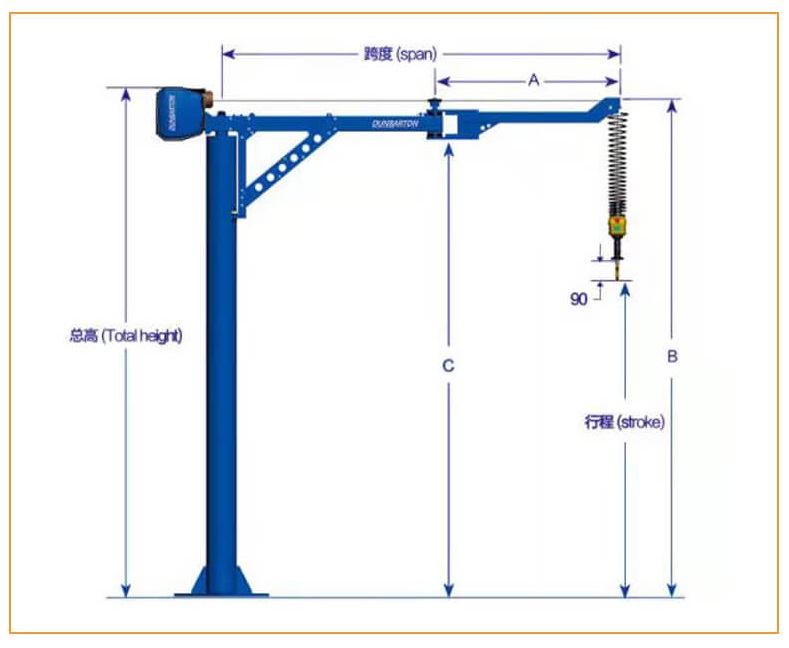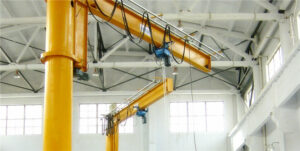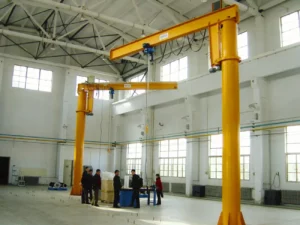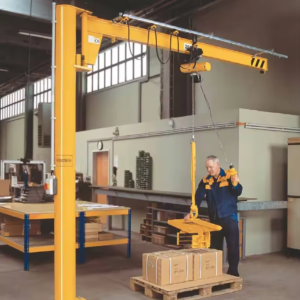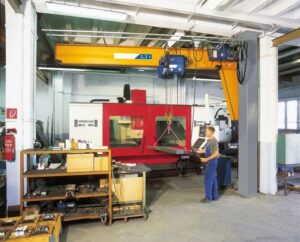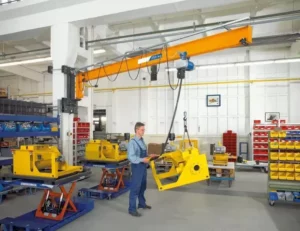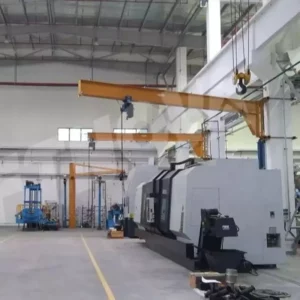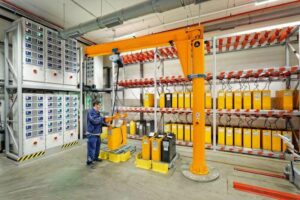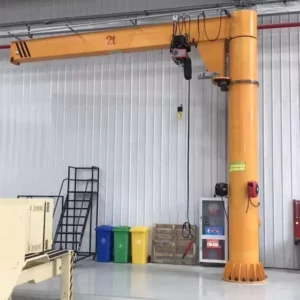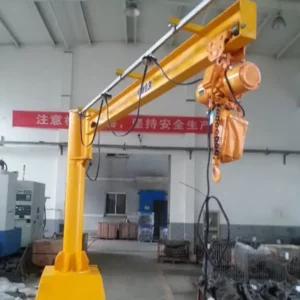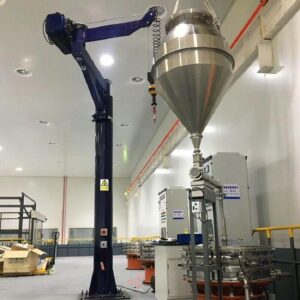Here are the top frequently asked questions (FAQs) about 3-ton jib cranes, providing essential information for potential users and buyers:
1. What is a 3-ton jib crane?
A 3-ton jib crane is a type of crane designed to lift and move loads up to 3 tons (6,000 pounds). It features a horizontal jib (boom) that extends from a vertical support, allowing the crane to rotate and handle loads within a circular area.
2. What are the different types of 3-ton jib cranes available?
3-ton jib cranes come in various types, including wall-mounted, free-standing, column-mounted, articulating, mast-type, and portable jib cranes. Each type serves specific operational needs and spatial requirements.
3. Where can a 3-ton jib crane be used?
These cranes are versatile and suitable for a variety of settings including manufacturing plants, construction sites, warehouses, shipyards, and workshops. They are especially useful where heavy lifting is required in confined spaces.
4. How much space is required to install a 3-ton jib crane?
The space required depends on the type of crane. Wall-mounted cranes require wall space with adequate structural strength and clearance for rotation, while free-standing cranes need sufficient ground space for a stable base. Ensure there is enough room for the crane’s full range of motion.
5. Can a 3-ton jib crane be customized?
Yes, 3-ton jib cranes can be customized in various ways, including adjustable arm lengths, heights, slew angles, and types of hoists (electric, manual, or pneumatic). Control options (such as handle or wireless remote control) can also be tailored to meet specific requirements.
6. What safety features should be included in a 3-ton jib crane?
Important safety features include overload protection, emergency stop buttons, limit switches to prevent over-travel, and robust hoist mechanisms. Regular maintenance and safety inspections are crucial for ensuring safe operation.
7. What is the typical lifespan of a 3-ton jib crane?
With proper maintenance and regular use, a 3-ton jib crane can last many years. The longevity of the crane depends on the frequency of its use, environmental conditions, and adherence to maintenance protocols.
8. What maintenance is required for a 3-ton jib crane?
Maintenance routines should include regular lubrication of moving parts, periodic checks of the hoist and cables for wear, and structural inspections to ensure stability and safety. Following the manufacturer’s maintenance schedule is recommended.
9. What training is required to operate a 3-ton jib crane?
Operators should be trained in proper lifting techniques, understanding crane controls, safety precautions, and emergency procedures. Specific training and certification requirements may vary depending on local regulations.
10. How do I choose the right 3-ton jib crane for my needs?
Consider the specific applications, available space, required range of movement, and specific lifting tasks. Consulting with a crane specialist or manufacturer can provide additional guidance tailored to your operational needs.
These FAQs offer a comprehensive guide to understanding, selecting, and safely operating a 3-ton jib crane, helping users to maximize their investment and ensure efficient handling of heavy loads.

